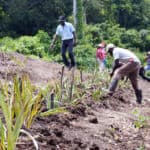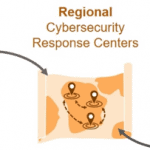Accessible Tourism for the Disabled: Developing a Valuable Untapped Market in Emerging Economies
The rights and wellbeing of people with disabilities is becoming a more urgent global priority. The UN Convention on the Rights of Persons with Disabilities calls on countries to ensure that the disabled have equal access to information, public services and the physical environment. The UN Sustainable Development Goals’ SDG-11 also seeks to make our cities more inclusive. One way to advance toward these objectives is to ensure that the disabled enjoy equal access to the benefits of tourism.
Along with the human rights aspect of this goal, there is also a compelling business case. The market size of accessible tourism cannot be ignored. In the U.S., the Open Doors Organisation estimates that adults with disabilities spend over $17 billion per year on travel. A 2015 paper in the Journal of Tourism Futures which analysed the European accessible tourism market showed that 70% of the people with disabilities have the financial and physical capabilities to travel. This translates into potential revenues of up to €88 billion by 2025. In Australia, industry veterans like Bill Forrester of accessible travel company Travability also emphasise the economic argument for inclusive tourism for people with disabilities – Forrester estimates that it can comprise about 25% of the country’s tourism market by 2020.
Of course, these estimates came before COVID-19, but though the pandemic has clearly devastated the travel industry in the short term, the potential for inclusive tourism will remain. In terms of numbers of tourists, around 1 billion people globally suffer from some form of disability, as per the WHO’s World Report on Disability. This translates into roughly 15% of the world’s population. Many of these individuals also enjoy high purchasing power. For instance, according to its 2011 census, around 18% of India’s approximately 27 million disabled people are college graduates or have completed secondary/matric education, implying some degree of disposable income.
Additionally, the business opportunity in serving these customers looks more promising when one considers that most disabled people are supported by caregivers, thus expanding the ecosystem of people involved. That leads to a multiplier effect on tourism spending. For instance, in Australia the average size of a travel group involving disabled people is 2.8 to 3.4, for overnight and day trips respectively, according to OECD Tourism Trends and Policies 2016. A similar multiplier effect should hold in other tourism markets as well. Lastly, the tourism industry enjoys linkages with several sectors of the broader economy, including transport, handicrafts, artisan shows and events, food and beverage, informal-sector tour guides, etc. Thus, the economic benefit of promoting accessible tourism is apparent.
Understanding Accessible Tourism in Emerging Economies
Accessible tourism adds specific services to a typical travel experience, to enable people with a physical or intellectual disability to travel with equity. This may include making information and booking systems accessible to all; ensuring barrier-free infrastructure at destinations, transport services and hotels; and providing trained support staff and activities that allow everyone to participate.
While disabled people still comprise the most underserved segment within tourism, many nations are now taking accessible tourism seriously. Amongst emerging economies, Singapore has seen the most initiatives. The Singaporean government has drawn up a list of FAQs to help tourists plan their trips. On its Mass Rapid Transit network, it has ensured barrier-free access, wheelchair-friendly toilets and train carriages, wider fare gates, Braille-friendly elevators and tactile paving. Service animals are allowed on buses and trains, and in restaurants and malls. Not only are its pedestrian walkways barrier-free, its cultural venues also have special seating.
Thailand, a popular tourism hot-spot, has taken similar steps. It has designated tourism routes in certain regions of the country that are completely accessible to tourists with disabilities. To raise awareness, it launched a Tourism for All website and Braille-inclusive guidebook. Thai agencies are actively promoting the nation as accessibility-friendly in Europe and the U.K. Similarly, Malaysia has embarked on a partnership-driven approach to launch audio descriptive heritage walks on Penang Island, involving stakeholders like the National Council for the Blind – Malaysia, George Town World Heritage Incorporated and Friends of George Town Heritage. Moving to the other side of the Indian ocean, South Africa is the most accessibility-friendly tourism destination in Africa. It offers Braille trails and ramp access in nature reserves, boardwalks for wheelchair access at attractions, and a dedicated website to assist disabled travellers, and also allows guide dogs on domestic flights. Across the Atlantic in Chile, the Chilean National Tourism Board and National Disability Service partnered to produce a comprehensive guide for disabled travel. The country introduced wheelchair access in metro stations, trains and some buses, and even launched tactile versions of its famous street art. Businesses have also gotten involved: A Chilean startup, Wheel the World, made a wheelchair specially designed to navigate the uneven terrain of Patagonia.
Business Solutions for Accessible Tourism
In many emerging countries, the market is responding dynamically to the demand for accessible tourism services, with several models gaining traction. In India, where government initiatives have yet to scale up, the private sector has moved in proactively. One interesting example is Planet Abled, an inclusive tourism services firm. According to the company, it is the only such provider of its scale in India, serving customers from both India and abroad – including as far away as Brazil.
Neha Arora, who left her job at Adobe to launch the company four years ago, says they follow a principle of universal design, which implies that all people, regardless of disability, can utilise the services equally. Rather than segregating these services, she targets everyone, so that a disability just becomes yet another human feature. The equitable treatment element of this universal design concept also promotes better awareness about disability issues amongst Indians, who often show either excessive concern or extreme apathy towards the disabled. The support services Arora’s company offers are based on years of painstaking research and fact-finding about the challenges disabled travellers and their caregivers face. She built on her own experiences too, as her parents suffer from visual and mobility disabilities. As a child, that restricted her family’s ability to take vacations, since the tourism sector was traditionally not geared to cater to the needs of the disabled – a gap in the industry she is determined to close. Interestingly, according to Arora, the company turned break-even within a short time after launch, in contrast to most Indian startups – which is indicative of the profitability and market opportunity that accessible tourism offers.
Accessible tourism is set to comprise a decent share of the global tourism market, while addressing an unfulfilled need for the disabled. But while some companies have jumped in, the room for growth is still immense. Countries that are keen to build a foundation for these businesses should strive to make their tourism infrastructure disabled-friendly, feature photos and information about available services in their tourist resources, provide accessible websites for the visually challenged, and avoid inaccurate descriptions of the services available. To unlock further opportunities, they should consider extending these offerings to include cruises, live-in experiences with local communities, and festivals and other events. These measures would go a long way toward promoting emerging countries as tourism-friendly destinations for the disabled, while also helping businesses realize the latent opportunity this market offers.
Sourajit Aiyer is a Research Consultant with South Asia Fast Track Sustainability Communications.
Photo courtesy of Stefano Intintoli.
- Categories
- Uncategorized



